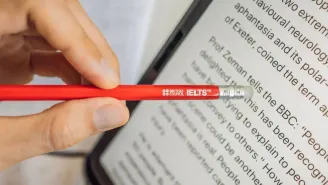The Development of Travel Under the Ocean Reading Passage
The Development of Travel Under the Ocean Reading Passage
Paragraph 1
For millennia, humans have been intrigued by what lies beneath the sea and although submarine travel was attempted from time to time, it did not become commonplace until the middle of last century. Several clever and innovative people had experimented with designs for submersible boats before then, but there was much loss of life and little success.
Paragraph 2
There had long been use of a primitive diving bell for exploratory purposes, but it was as a war machine that the submarine came into its own. The first development in the history of American submarines was a small submersible with a hand-cranked screw-like oar and a crew of one. It was built before the American Revolutionary War (1775—1783) but was adapted for use against the British during this war. Although its pilot twice failed to fasten explosive devices to British ships before losing control of his vessel, he escaped harm.
Paragraph 3
In 1800, an American inventor, Robert Fulton, designed an underwater machine that he called the Nautilus. This version brought in features that can still be found in some modern submarines, notably adjustable diving planes for better underwater manoeuvring, dual systems of propulsion, and a compressed air system that allowed it to stay down for about four hours without surfacing.
Paragraph 4
Development of submersible vessels lagged a long way behind the continued progress in the design of surface ships until the American Civil War (1861-1865) when both sides tried out various designs. One of those, called the Hunley — named after its 8nancier rather than its inventor, sank twice during training missions with 11 crew members losing their lives, including Hunley himself. Notwithstanding these failures, it was commissioned again in 1864 to attack a ship in Charleston Harbor. A torpedo was used to strike and scuttle the ship – an 8th in naval history, but the submarine never reappeared, and once again, the whole crew perished. Its potential had been recognised, but there still remained the challenge of operating safely under the water.
Paragraph 5
The US Navy could appreciate the strategic benefits of having submarines in its fleet and held a competition to encourage the design and construction of these underwater craft. The inventor, John Holland, won the competition, and it was his sixth prototype, the Holland, that the Navy bought and added to its fleet in 1900. This submarine was quite different from previous designs. It was propelled by a gasoline engine that turned a propeller while the vessel was on the surface. When it submerged, the engine ran a generator to charge batteries to operate an electric motor. The improved propulsion methods were, unfortunately, highly dangerous. Not only is gasoline ammable and unstable, using it in the restricted environment of a submarine posed quite a hazard for the crewmen. There was another problem, too: the batteries were not only heavy, cumbersome and inefficient, but they were also extremely volatile.
Paragraph 6
During the same period as Holland’s efforts were being trialled, a German scientist by the name of Rudolf Diesel created an engine which used a fuel less explosive than gasoline and which would consequently be stored safely. Another advantage was that there was no necessity for an electric spark to ignite the fuel. These safety improvements, combined with better fuel economy, allowed Diesel engines to power a submarine for longer on the surface; however, batteries were still needed to supply energy for underwater operation.
Paragraph 7
Although diesel-powered submarines were successful and used by the US Navy for almost 50 years, the search for a single power source carried on. It wasn’t long before the concept of nuclear power was realised in Germany and taken up by an American physicist, Ross Gunn, who could envisage its potential in submersibles. A research team was put together to adapt the concept of nuclear power for use in submarines. In effect, modern nuclear submarines have on board a small nuclear power plant which produces a great amount of energy. This is used to heat water and create steam which drives a huge turbine which turns the propeller.
Paragraph 8
There have been many adaptations and technological improvements made to submarines over the years, but the shape is basically the same. Obviously, it is a totally enclosed craft, cigar shaped with narrowed ends. The outer hull is the largest part of the boat and forms the body. The inner hull is designed to resist the considerable water pressure and insulates the crew from the cold. This is where the crew works, eats and sleeps. It also contains the engine room and the apparatus that makes clean air and clean water. Between the hulls are the ballast tanks for controlling buoyancy. There is a tall 8n-shaped sail that comes up out of the hull. Inside the sail is the conning tower and extending from this, to the fore, there is a periscope (through which the captain can see the sea and sky when the submarine is near the surface of the water). Sonar is used for navigation deep below the surface. The other projection from the conning tower is the radio antenna.
Paragraph 9
Underwater, there are two controls for steering the submarine. The rudder (like a tail 8n) controls side-to-side movement, and diving planes influence rise and descent. There are two sets of diving planes: the forward sailplanes and the stem planes, which are located at the back with the rudder and propeller.
Paragraph 10
Advancing technology will undoubtedly result in different shapes and modes of operation, and it is quite possible that, in the future, submarines will be manned by robots or computer technology that communicates information to land bases via satellite.
The Development of Travel Under the Ocean Reading Question and Answers
Discover exciting and informative IELTS reading answers about The Development of Travel Under the Ocean.






